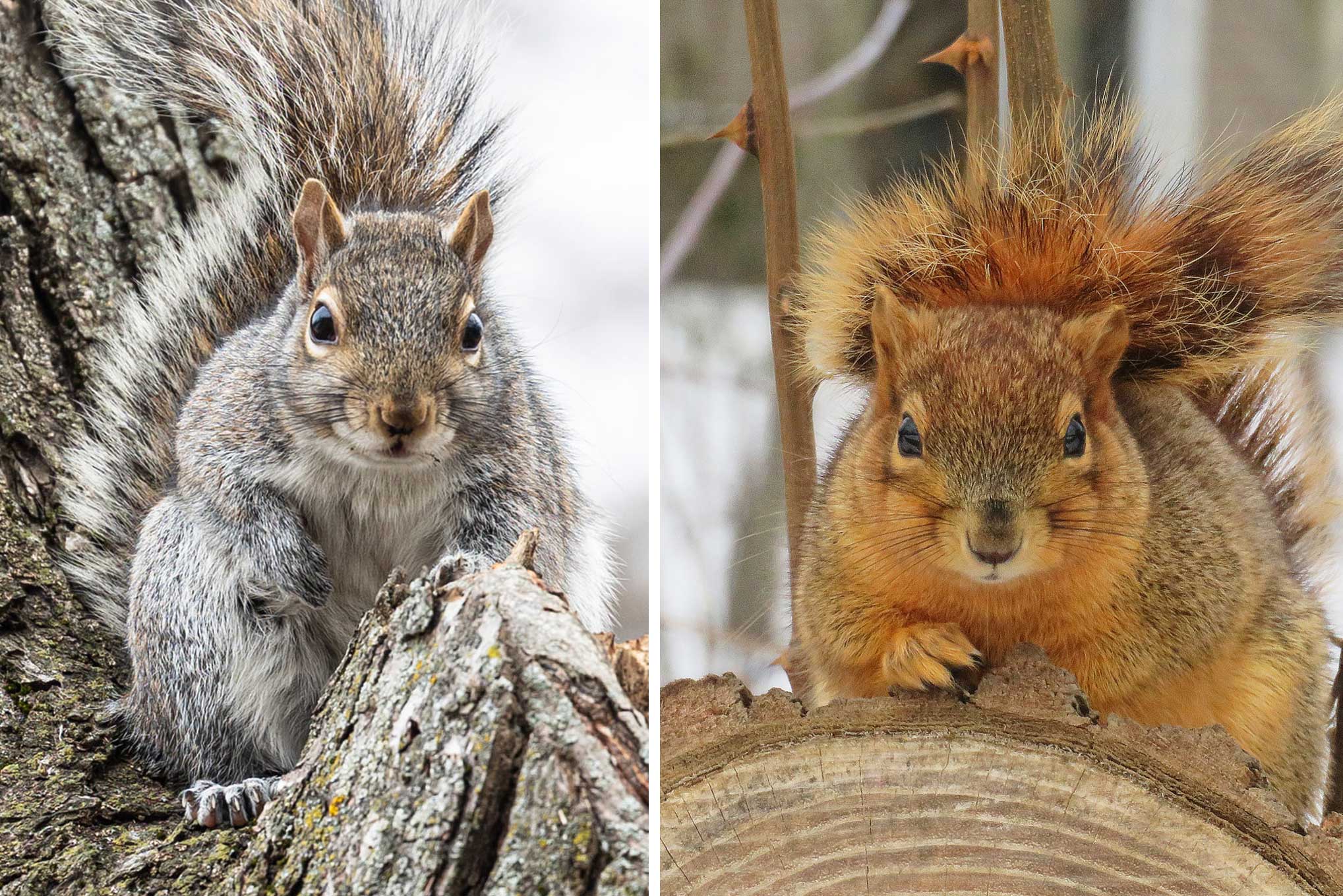What's the difference: Eastern fox squirrel vs. eastern gray squirrel

The sight of a squirrel zipping up, down and all around our trees and forests is a familiar one to most people, but the zany antics of these critters can be the work of one of two species: fox squirrels or gray squirrels.
Fox squirrels and gray squirrels are similar in appearance, with long, bushy tails and big ears and feet, but their fur color is a key identification feature. Fox squirrels have rusty colored fur mixed with black, giving them an overall reddish-brown appearance, according to Wildlife Illinois. The fur on their bellies and ears and along the edges of their tails is lighter and looks more rusty in appearance. Gray squirrels look very similar to fox squirrels, but with gray fur on the back and white or light gray bellies.
Fox squirrels are also larger than gray squirrels, although the difference may not be that noticeable to a casual observer. Fox squirrels are between 19 1/2 inches and 22 inches long and weigh between 1 3/4 pound and 2 pounds, while gray squirrels are between 17 1/4 inches and 18 1/4 inches long and weigh about 1 1/4 pounds, Wildlife Illinois reports.
Both fox squirrels and gray squirrels prefer habitats with tree cover, but gray squirrels typically live in forests and woods with a closed tree canopy, while fox squirrels prefer forest edges and clusters of trees near open space, according to the Illinois Department of Natural Resources. Both squirrel species live in urban environments as well as suburban and rural habitats, but fox squirrels and gray squirrels do not typically inhabit the same spaces.
Fox squirrels and gray squirrels are common and widespread across Illinois, but the gray squirrel population in the state has declined as mature forests have been lost to development and other changes in land use, according to IDNR.
Fox squirrels and gray squirrels are our most common squirrels, but they aren't the only ones. Northeastern Illinois, including Will County, is also home to red squirrels, although they aren't nearly as common as our more familiar squirrels, Wildlife Illinois reports. Southern flying squirrels also live throughout our state, but they are much more common in the southern part of the state.
Red squirrels are smaller than fox squirrels and gray squirrels and have reddish gray backs and white bellies, according to Wildlife Illinois. Their eyes are also ringed in white fur, and they have ear tufts in the winter. Flying squirrels are the smallest of the Illinois squirrel species, and they have grayish or cinnamon brown backs and white bellies. They have large eyes and appear bulky because of the folds of skin on both sides of their bodies that they use to glide, or "fly," through the air.
So what about black squirrels? Black squirrels are not a separate species of squirrel. Instead, squirrels of any species can be black because of a genetic mutation called melanism that causes their fur to be black instead of the usual reddish brown or gray, according to the Pennsylvania Game Commission. Similarly, all white squirrels are the result of genetic conditions as well, either leucism or albinism. Squirrels with albinism will have all white fur with pink eyes, while leucism can cause the squirrels to have all white or partially white fur. While black squirrels are fairly common, white squirrels are more rare.
In some cases, black and white squirrels become more prevalent in certain areas as they reproduce and more melanistic, leucistic or albino squirrels are born. For example, white gray squirrels are more common in Olney, Illinois, and the northeastern part of the state, while black gray squirrels can be found in Fisher and Gibson City, Illinois, Wildlife Illinois reports.
